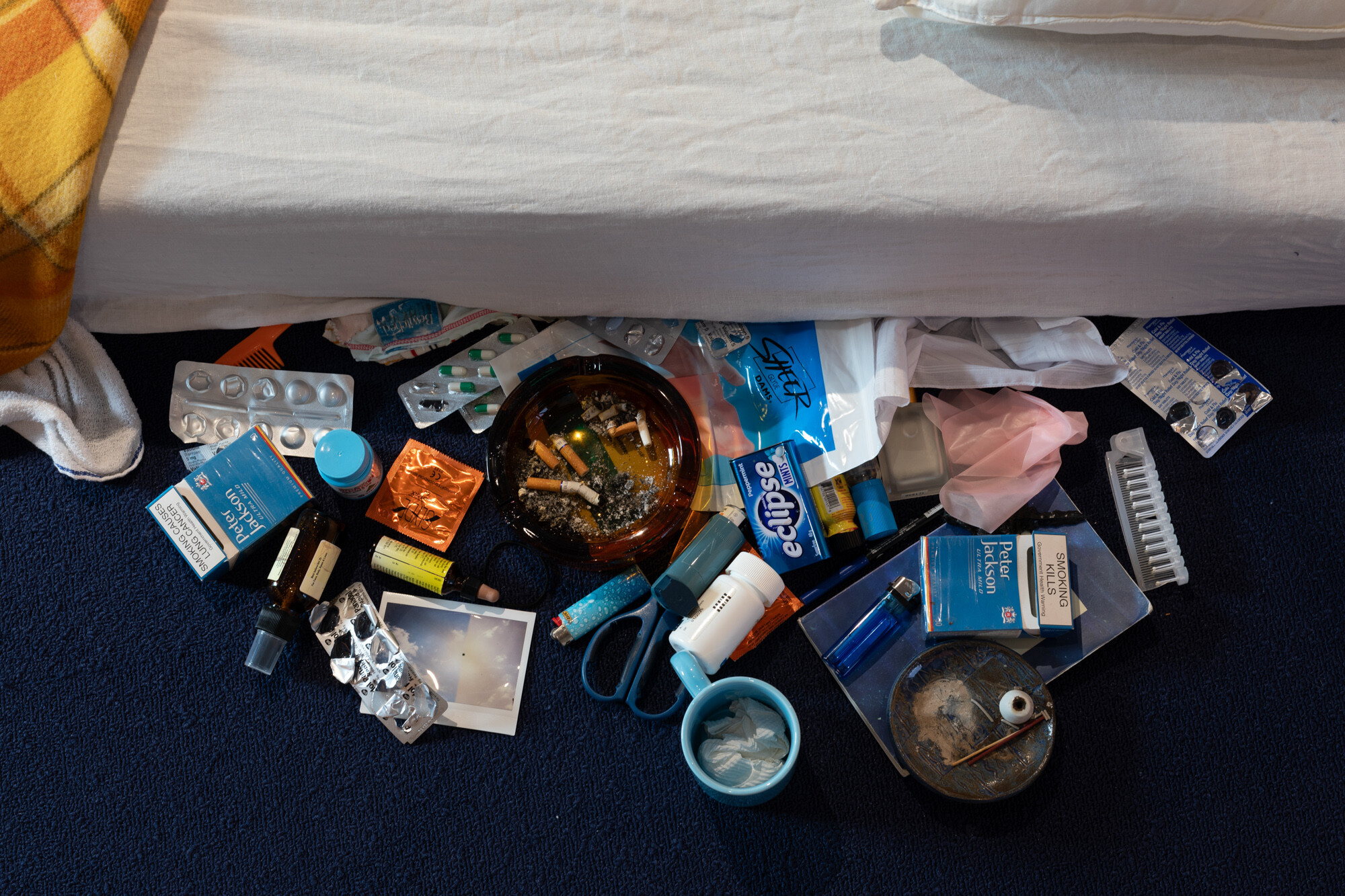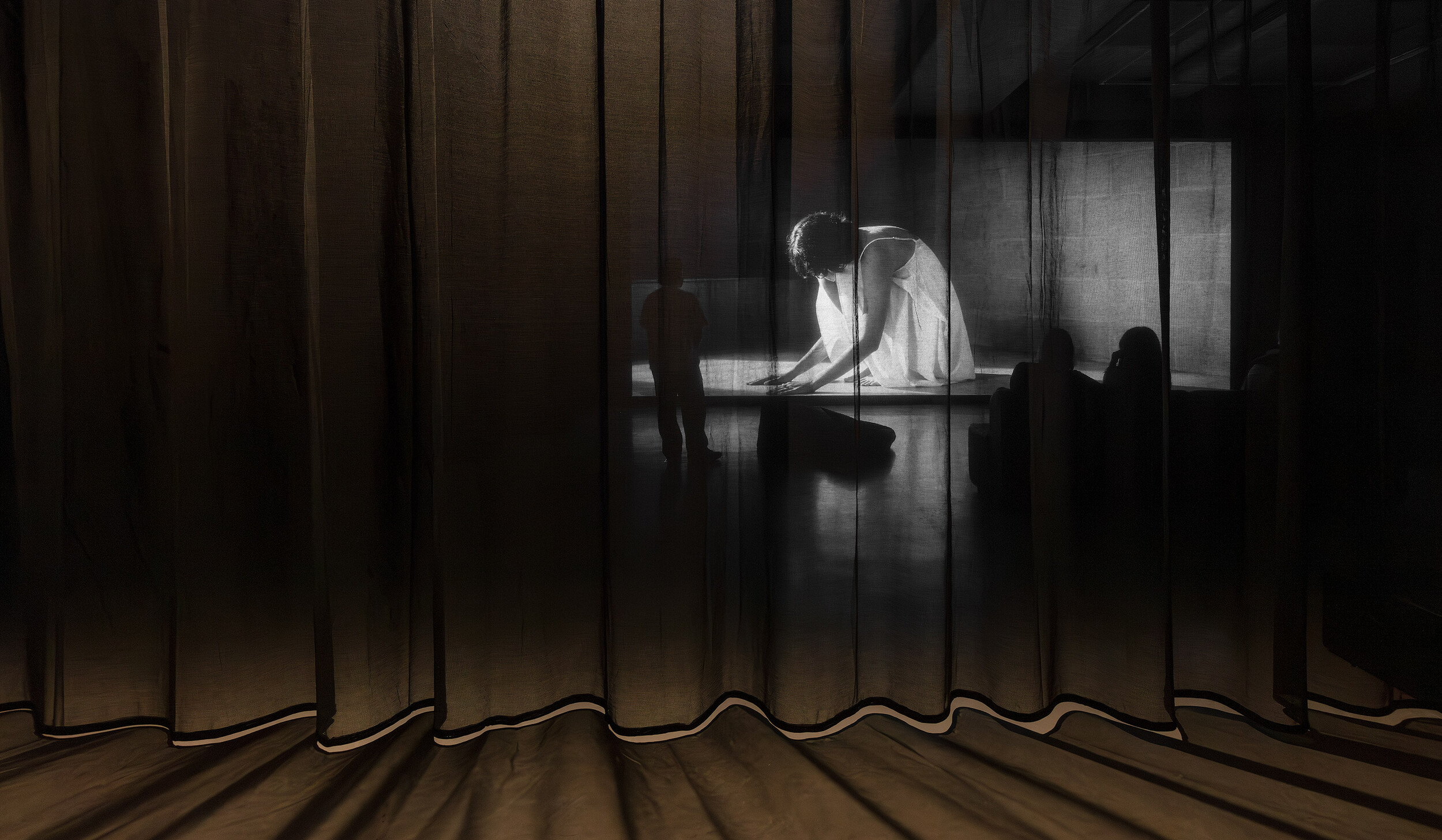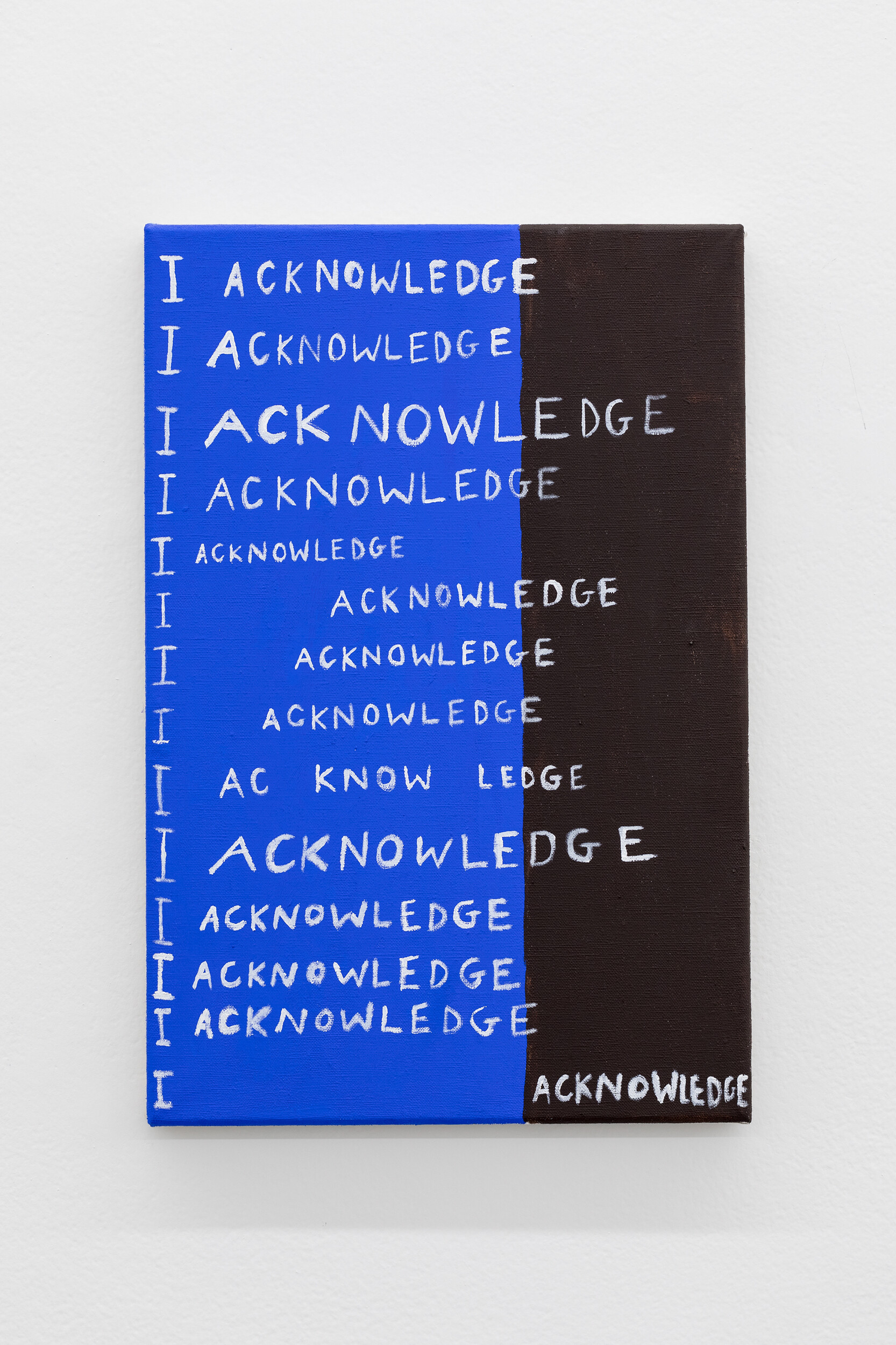A Good Idea
Felix McNamara
Romanticism is much talked about in recent internet-inflected discourse (though all discourse is now, of course, internet-inflected). American journalist and novelist Ross Barkan wrote in late 2023, on the cusp of the final year of the Biden Administration, an article for The Guardian titled “The zeitgeist is changing. A strange, romantic backlash to the tech era looms”: “the modern creative class, beleaguered enough, barraged by two decades of digital technology that has radically cheapened music, television and cinema, is ready for combat.” The new American regime change coincided, to Barkan’s rhetorical favour, with what The New York Times referred to in February as “The first major U.S. exhibition of Germany’s great Romantic painter”, Caspar David Friedrich, whose most famous painting, Wanderer above the Sea of Fog (1818), is the most obvious picture associated with Romanticism: a figure standing on rocks like the ones in the installation view above, overlooking a vast, mysterious natural landscape. As such, reflections on the “Neo” or New “Romanticism Vogue” continue—(parallel to talk about how the idea of “vibe shift” requires a reading of Hegel’s notion of Geist)—notably in essays like Matthew Gasda’s for Wisdom of Crowds, “A Few Doubts About Neo-Romanticism: Are you sure you want to become a Romantic?”

Installation view of A Good Idea, 2025. Sam Chermayeff Office, Poles (assembled by Rowan Le Sueur, Nicholas Schultz, Sophie Shaw, Sellina Cheng, Sandra Yang), 2025. Photo: Hamish McIntosh.
What does all this talk have to do with a design exhibition of “crafted artefacts,” A Good Idea at the Tin Sheds Gallery? Running April 16 to May 30, 2025, it includes works by Stand Van Zaken, Theo De Meyer, and Stefanie Everart, and Ine Meganck from Belgium, GFA2 from Spain and Australia, Desplans from France and Sweden, BAST from France, Erika Nakagawa + erikalab from Japan, Mike Hewson from New Zealand/Australia, and Sam Chermayeff Office from Germany/the United States.
Well, on the surface, the show’s intentionally ambiguous, decentralised curation is somewhat reminiscent of the political structures and geographies of pre-Westphalian Europe, which the Romanticists often idealised: “Stand Van Zaken” is framed as the curator of the show, but this is not a European person, but rather a collaboration between Theo De Meyer and Stefanie Everaert, who are also individually listed as a part of the exhibition; but Guillermo Fernández-Abascal is also its major co-curator and general mastermind.
More importantly, though, I think this exhibition is an interesting and historically useful example of architectural culture dealing with the broader cultural, political, technological, and economic tumult that has given rise to this ambiguous, contested, yet still significant and worth-thinking-about revival of a certain version of the spirit of Romanticism.
Architecture and design’s relation to the highly literary phenomenon of the Romantic “movement” is complicated. In terms of artistic disciplinarity, it’s not uncontroversial to say that literary Romanticism is what we think of when we think of or say Romanticism; we largely consider those named by Gasda in the essay mentioned above: Shelley, Byron, Goethe, Keats, Novalis, et al. Romanticism’s translation into architecture is perhaps most cursorily associated with nineteenth-century Gothic revivalism, the Arts & Crafts movement, but also (less obviously) with the Bauhaus in the early twentieth century. In a far more general sense, themes of Romanticism are at play in architectural culture whenever we consider the “difficult” personality. The most recent mass-cultural depiction of architects/the architect, The Brutalist (2024)—where non-consensual cave sodomy serves as a subtle metaphor for working for wealthy clients—is a depiction of the architect as a Byronic, romantic artist. (Anyone who stereotypes modernism as a program of simplistic social engineering should read about modernism’s complex debt to Romanticism.) As with literary Romanticism, there was a tendency among the nineteenth-century Gothicists to over-emphasise the good, and neglect the shite of the pre-capitalist medieval eras to which they looked back upon, romantically: yes the pre-modern world had pogroms, bubonic plague, witch burnings, thirty-year life expectancies and rotting teeth, constant death-by-childbirth, constant death of children in general; but these were also artisanal times, where you could build and sit in your own chair.

Installation view of A Good Idea, 2025. Seating by Stand Van Zaken (Theo De Meyer and Stefanie Everaert) and Guillermo Fernández-Abascal. Theo De Meyer and Stefanie Everaert, Your Drawing May Be Small, But Not Your Frame, featuring drawings of Theo De Meyer’s A Chair of Tiles, and GFA2’s (Guillermo Fernández-Abascal) Tapes and Rocks, 2025. Bench by Stand Van Zaken and GFA2. Photo: Hamish McIntosh.
This show luckily trades in no such bankrupt nostalgia. All of the works included in A Good Idea allude to the alienation of the contemporary designer from the material objects of their labour, but the mood here is optimistic. All designers featured demonstrate an attempted practice of bridging artistic-intellectual (typically “immaterial”, computerish) labour with the actual making of things—a making with distinct technological and economic parameters.
The show is highly fruitful in playing with a kind of ambiguous Ruskinian design romanticism (an unsentimental and small-r romanticism, and an unsentimental small-r ruskin), achieved, importantly and necessarily, through a lack of overt intellectual self-consciousness or explicit theorisation, which might have proved, and typically does prove, disastrous, both in terms of pretension and dogmatism. The “good ideas” to which A Good Idea refers are evidenced in design objects themselves without painful self-theorisation, without dogma, the kind which tends to make architects and artists sound like self-serious boring arseholes.

Installation view of A Good Idea, 2025. Workshop 4 (W04): Shalini Rautela, Tess Bell, Lindsay Mulligan, Rowan Lear, and Samuel Murnane (under the supervision of BAST as a part of a program run in collaboration with Guillermo Fernández-Abascal at Mori Lewisham), Washing, 2024. Theo De Meyer and Stefanie Everaert, Your Drawing May Be Small, But Not Your Frame, featuring drawings of various projects from the BAST workshop, 2024. Photo: Hamish McIntosh.
The show contains a carefully managed and rather elegant hierarchy of object scales. The largest works in the gallery space are the centrally located bamboo pavilion, ‘Yamanaka Terrace’ by Erika Nakagawa + Erikalab, and ‘Washing’, an outdoor shower made by the fourth group of workshops (WO4, which comprised of Shalini Rautela, Tess Bell, Lindsay Mulligan, Rowan Lear, and Samuel Murnane), produced under the supervision of BAST as a part of a program the Frenchmen ran in collaboration with Guillermo Fernández-Abascal at Mori Lewisham in late 2024. Below these in scale are Theo De Meyer’s ‘A Chair of Tiles’, Sam Chermayeff Office’s ‘Poles’, and Mike Hewson’s ‘Continuous Fountain’. At a miniature scale, a number of details populate the space, indicated in the catalogue by labels such as ‘Tapes and Rocks.’ Unifying the exhibition is a language of frames designed by Theo De Meyer and Stefanie Everaert (Stand Van Zaken), black MDF (medium-density fibreboard) behind galvanised steel sheets onto which the typically instructive drawings of the various contributors are fixed with magnets. These are treated as works in-themselves, titled ‘Your Drawing May Be Small, But Not Your Frame,’ referred to in the catalogue as “monumental frames,” an effective exercise in privileging form over content.

Installation view of A Good Idea, 2025. Erika Nakagawa + Erikalab, Yamanaka Terrace, 2025. Photo: Hamish McIntosh.
The catalogue also gives a general note as to the relation of each work to the small drawings displayed on these large frames: “Depending on users’ desires and material constraints, they function as loose yet highly precise guidelines for fabrication.” This double-sided looseness and precision make the exhibition’s true audience clear: not an amorphous, generalised “public”, but architects, architecture students, designers, and artists who make design-esque objects. In other words, the exhibition is intended for architects, designers, and artists whose interests and spirit side more with the romantic making of things, as opposed to those more comfortable with digital detachment from the physical: perhaps a fetishisation of the image over the physical thing. Now that AI tools are increasingly used in institutions and in practice, the ideal audience of “A Good Idea” might, like Lord Byron, sympathise with the Luddites.

Installation view of A Good Idea, 2025. Theo De Meyer, A Chair of Tiles, 2025. Seating by Stand Van Zaken (Theo De Meyer and Stefanie Everaert) and GFA2 (Guillermo Fernández-Abascal). Theo De Meyer and Stefanie Everaert, Your Drawing May Be Small, But Not Your Frame, featuring drawings of Sam Chermayeff Office’s Poles, 2025. Photo: Hamish McIntosh.
It’s interesting to navigate the variety of ways in which the show’s crafted artefacts relate to their corollary drawings. In the case of the work produced by the BAST workshop (W04), the didactic isometric linework drawings may be read as something of a defensive gesture: No, this isn’t a piece of garbage we found at the tip, this is our architecture. Nonetheless, these IKEA-like drawings have an interesting aesthetic effect in contrast to the ad hoc, yet careful object they explain.
Sam Chermayeff’s ‘Poles’ demonstrates, between its post-it note instructions, and the poles themselves, the intended culture of collaborative fabrication to which the show’s spirit in general points: these ‘Poles’ were assembled in Sydney with certain rules to follow and with certain decisions to be made without input from Chermayeff. As such, they’re simultaneously identifiable as by Chermayeff, and, in distinct choices, they are non-Chermayeff. A similar ambiguity of authorship occurs too in the case of the BAST + friends contribution, with both such cases echoing the ambiguous nature of the show’s curation as-a-whole. Such small-r romantic collaboration can be read as either genuinely democratic, or as a democratic mask that, in fact, reinstates the authorship of the big name, the European Lord, against those of the peasants (people who don’t live or teach in Switzerland, that nice “neutral” place). I don’t think it’s possible for this tension to be negated entirely in any culture that relies on name-recognition capital (i.e. any culture). But it’s a tension we should be conscious of.

Sam Chermayeff Office, Poles, 2025 (Detail). Photo: Hamish McIntosh.
A Good Idea is open and playful in terms of how its works might be read—and judged—on more functional, or more formal terms: “…domestic rituals through artefacts, blurring the line between bad art and excellent architecture, or perhaps the other way around.” This ambiguity is particularly apparent in the contribution and work at large of Mike Hewson, the show’s only contributor vocationally categorised as an “artist.” It’s also apparent in Theo De Meyer’s ‘A Chair of Tiles’, which is comfortable to sit on, but doesn’t look like a chair. De Meyer’s work relates more broadly to this or perhaps the other way around question, as many of the light-red design objects associated with his name in a Google image search look like the barbeque—from a ‘Barbeque Pit Kit’—that Homer Simpson tries to build in Episode 19 of Season 10 of The Simpsons. Homer fails to make the barbeque pit—a design object—but his failure is re-branded as outsider-art. He only had the French instructions. Probably Swiss French. This is no insult; I like Homer Simpson.

Installation view of A Good Idea, 2025. Mike Hewson, Continuous Fountain (assembled by Ruiqing Liang and Sonya Yi), 2025. Theo De Meyer and Stefanie Everaert, Your Drawing May Be Small, But Not Your Frame, featuring drawings of Mike Hewson’s Continuous Fountain. Photo: Hamish McIntosh.
The exhibition is wise to avoid framing itself in overly didactic terms, despite the fact that it does obviously have an experimentally didactic character, showing designers, even at a graduate level, what can be done with relatively few resources, and relatively unskilled experience with craft. The show plays and experiments thoroughly with the creative possibilities of didacticism in a culture that is overly didactic in another problematic and general way: the best lessons of this exhibition might come from the moments in which explicit instructions are blurred or withheld. This demonstrates the show’s spirit of optimism, a willingness to take risks within or at least beside the generally risk-averse institutions of architecture and design, and a willingness that is small r-romantic.
Being a designer who designs an actual thing that can be made, by oneself or others, is a very, very difficult thing. The general economic unviability of being a designer means that, by the nature of Finance Darwinism, designers (like many contemporary artists) are often entirely or largely inoculated from market pressures by large, absurd, familial endowments, the socialism of the rich or the Real Estate hoardings of the parasite class.
It’s easy to cynically dismiss the possibility of such democratisation, perhaps by alluding to the equally possible outcome of such democratisation being achieved only virtually—as an image for branding—as opposed to in actuality…but to close off the possibility of a more genuinely democratic design culture, engaged in actually making things both individually and collaboratively, would be a sad mistake. In A Good Idea, there are universal possibilities, contained across particular experiments. Hopefully, it will inspire.
Felix McNamara is a writer. He teaches at the Melbourne School of Design and substacks at Corporate Total Art.


